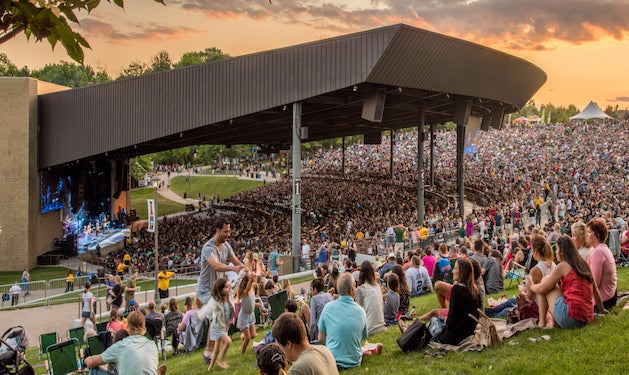Museum at Bethel Woods Senior Curator Neal Hitch discusses environmental art, or conceptual art, at the Woodstock Festival.
Earth Day provides the opportunity to look at one of the more unexamined aspects of The Woodstock Music and Art Fair– the “Art” part.
Earth art emerged in the United States in the late 1960s. The landscape and the work of art were inseparably linked. At the end of 1969, the artist Christo wrapped 1.6 miles of coast in Sydney, Australia, with over 1 million square feet of synthetic fabric. This was the largest single artwork ever created at the time and was directly linked to the landscape. In the creation natural art, found art, or environmental art, Woodstock was at the forefront.
In the Road to Woodstock, Michael Lang said that “...the name ‘Woodstock’ symbolized the rural, natural setting” of the festival. But he would come to call the event “An Aquarian Exposition: The Woodstock Music and Art Fair.” The festival was to “...encompass all the arts, not only music but crafts, painting, sculpture, and theater.” Having artwork permeate throughout the landscape was one of the early concepts and key elements of the festival.

The Art Crew

One of the groups who accomplished this was the “Art Crew.” Two art professors, Bill Ward and Ron Liis, were contracted to bring students from the University of Miami to plan and create integrated art installations throughout the festival site. The Mills Industrial Park site was secured in April 1969. The Art Crew arrived in June. The work of the Art Crew is discussed in Bill Ward’s book, Work’n on Woodstock, available on Amazon Kindle, one of the few sources that details this aspect of the festival.
The work they created was situated throughout the festival, with several large installations built in an area known as the “Playground.” After arriving at the Mills site, Ward noted that “...we should celebrate the land and develop the festival site by putting in all of the things we liked from the countryside.”
This became the defining feature of the artwork. Sculptures made from local materials, mostly wood and stone, in linear abstract compositions. The art was meant to be compatible with the environment it occupied. The art was organic, primarily derived from the earth, and made from materials on hand like rocks and trees.
Conceptual Art
Bill Ward defines the work as conceptual art. Today, we would describe it as environmental art. And the work completed by the art crew is indicative Woodstock of what would become the environmental art movement. The artwork was contemporary, set into the landscape, and invited the festival goers to interact. Ward acknowledges that this was “possibly the first conceptual artwork most of the festival visitors had ever seen.”
“It was interactive.”
“They could touch it.”
“Sit on it.”
“Talk about it.”

At the Playground, there was a structure about six-feet-tall with baby chicks behind chicken wire. A structure called the “Jungle Gym” was built at the Mills site and reconstructed at the Yasgur Farm site. The most photographed installation was a tall teepee-like structure with a stone hanging by ropes. There are many photographs of the pieces, usually with people climbing all over them, and in the case of the Jungle Gym, someone camping inside.
In the end, Ward summed up the collaborative artwork as this: “Part sculpture, part theater, definitely art to be shared including interaction between the viewer and the object, including the best of everyday farm objects mixed with good composition, texture and content.”
When the crowds appeared, when fences were torn down, and when the music started, the “Art” part of the Festival became submerged in the gravity of the event we know today. But Bill Ward saw a silver lining, “...our works did have perhaps the largest viewing public any art has ever seen.”
